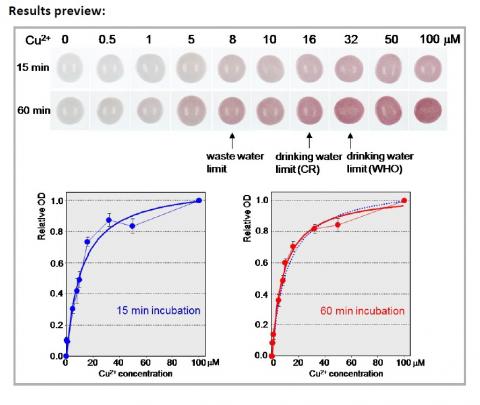New biosensor for detection of copper ions in water based on immobilized yeast cells
INTRODUCTION:
Most of the biosensors described in the past require specific devices for the detection of a pollutant. We present a newly designed biosensor for detecting Cu2+ concentration visually by the evaluation of the red coloring of immobilized yeast S. cerevisiae.
TECHNOLOGY (INVENTION) DESCRIPTION:
The biosensor uses an S. cerevisiae strain with the ADE2 gene deleted from the genome and with the natural promoter regulating the expression of the ADE5,7 gene replaced with the CUP1 promoter. The resulting strain produces red pigment only in the presence of Cu2+ and in a quantity proportional to the copper concentration when in the range of 1-100 μM. The intensity of the red coloring and therefore of the Cu2+ detection are optimal when the strain is immobilized.
ADVANTAGES OVER EXISTING SOLUTIONS:
The current market does not offer a product with comparable features.
DEVELOPMENT STATUS (STAGE):
The reported biosensor can also be easily modified for the detection of other chemical substances by replacing the CUP1
PUBLICATIONS:
Vopalenska, I., Vachova, L., and Palkova, Z. (2015). New biosensor for detection of copper ions in water based on immobilized genetically modified yeast cells. Biosensors & bioelectronics 72, 160-167.
IP PROTECTION STATUS:
Method of modification of the detection yeast strain is protected by Czech patent
TECHNOLOGY / IP OWNERS :
Charles University in Prague, Czech Republic Institute of Microbiology of the AS CR, v.v.i., Prague, Czech Republic

More information
More information is available upon signing a CDA / NDA (Confidential Disclosure Agreement / Non-Disclosure Agreement)